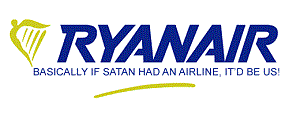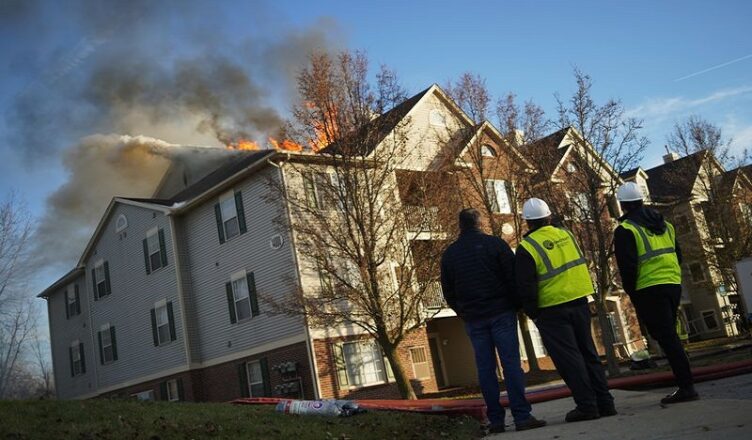Key Takeaways:
- Fire damage can have a devastating impact on homes in Metro Detroit, causing structural and property damage.
- Smoke and soot residues from fires can be difficult to remove and pose health hazards.
- Professional cleanup after a fire is essential due to the presence of harmful contaminants and toxins.
- Restoration experts have the knowledge, skills, and equipment to efficiently clean up fire damage and navigate the complexities of insurance claims.
- The restoration process includes salvaging compromised structural elements, restoring electrical and plumbing systems, and addressing smoke and soot residue.
- Collaboration with architects and contractors is important during the rebuilding phase to incorporate fire-resistant materials.
- Fire prevention measures include fire safety education, installing detection and suppression systems, and regular inspections and maintenance of fire safety equipment.
Fire damage can have a devastating impact on homes in Metro Detroit. The destructive power of fires can leave structures and belongings in ruins, and the aftermath of a fire event often brings hidden dangers that require professional cleanup. In this comprehensive guide, we will explore the effects of fire damage, the cleanup process, the restoration of fire-damaged properties, and the importance of fire prevention and safety measures.
Understanding the Impact of Fire Damage
Investigating the Devastating Effects of Fires
When a fire occurs in a home, the destructive power it unleashes can be overwhelming. Flames quickly engulf everything in their path, causing irreparable damage to structures and belongings. The heat generated by a fire can weaken the structural integrity of a building, making it unsafe to enter after the flames have been extinguished.
In addition to the immediate destruction caused by the fire, the lingering effects of smoke and soot can also be detrimental. Smoke can permeate porous surfaces, leaving behind a stubborn residue that can be difficult to remove. Soot, a byproduct of incomplete combustion, can cling to surfaces and create health hazards.
Uncovering the Hidden Dangers in Metro Detroit Fire Damage
After a fire event, there are often hidden dangers that homeowners may not be aware of. One of the most significant concerns is the presence of harmful contaminants and toxins. Materials such as asbestos, lead, and various chemicals found in household products can release hazardous particles when exposed to high temperatures.
These contaminants can pose serious health risks, including respiratory issues, skin irritation, and even long-term illnesses. The importance of professional cleanup after a fire cannot be overstated. Restoration experts are trained to handle hazardous materials safely and have the necessary equipment to remove them effectively.
The Road to Restoration: Fire Damage Cleanup Process
Crucial Steps to Kickstart the Restoration Journey
When it comes to fire damage restoration metro detroit, a systematic approach is essential. The first step is to assess the extent of the damage and create an action plan. Restoration professionals will carefully inspect the property, documenting the damage and identifying areas that require immediate attention.
As safety should always be the top priority, it is crucial to take necessary measures to protect everyone involved. This may include boarding up windows, securing the property, and wearing protective gear to avoid exposure to harmful substances.
Partnering with Professional Fire Damage Restoration Services in Metro Detroit
While some homeowners may consider handling the cleanup themselves, it is highly recommended to hire experienced restoration experts. These professionals have the knowledge, skills, and specialized equipment necessary to efficiently and effectively clean up fire damage.
One of the main benefits of working with restoration experts is their expertise in handling fire damage specifically. They understand the unique challenges posed by fire incidents and can tailor their approach to address the specific needs of each property. They also have access to advanced techniques and specialized equipment that can remove smoke and soot residue, eliminate odors, and restore damaged areas.
Furthermore, professional restoration services can help navigate the complexities of insurance claims. They can work closely with insurance companies to ensure that the costs of fire damage restoration are covered, easing the financial burden on homeowners.
Reviving Homes: Restoring Fire-Damaged Properties
Revitalizing Fire-Ravaged Spaces: Strategies and Techniques
The restoration of fire-damaged properties requires a comprehensive approach to bring them back to their pre-fire condition. Restoration experts employ innovative techniques to salvage structural elements that may have been compromised by the fire. They may use stabilizers to reinforce weakened areas or remove damaged materials and replace them with suitable alternatives.
Electrical and plumbing systems are often severely affected by fire damage. Restoration professionals work diligently to restore these essential systems, ensuring that they are safe and functional. This includes rewiring electrical circuits, repairing or replacing damaged pipes, and installing new fixtures as needed.
Addressing the residue left by smoke and soot is another crucial step in the restoration process. Restoration experts utilize specialized equipment to remove soot from surfaces and employ techniques such as thermal fogging to eliminate the odors associated with smoke damage. Professional cleaning products and methods are used to ensure that every affected area is thoroughly cleaned and sanitized.
Rebuilding and Renovating: Transforming Fire-Damaged Homes
Once the initial cleanup and restoration are complete, the process of rebuilding and renovating can begin. Collaboration with architects and contractors is essential to develop a comprehensive plan for rebuilding efforts. Architects can provide expert guidance on incorporating fire-resistant materials, which can help protect the property from future fire incidents.
During the rebuilding process, homeowners have an opportunity to transform their fire-damaged homes into spaces that are more resilient against future fires. This can include upgrading insulation, installing fire-resistant doors and windows, and incorporating design elements that promote safety and functionality.
Protecting Against Future Fire Damage: Prevention and Safety Measures
Fire Prevention Tips for Metro Detroit Homeowners
Preventing fires in the first place is the most effective way to protect homes and ensure the safety of inhabitants. Metro Detroit homeowners can take several proactive measures to minimize the risk of fire incidents. Implementing fire safety education and training practices within the household is crucial. This includes educating family members about fire safety guidelines, teaching them how to use fire extinguishers, and practicing evacuation drills.
Installing effective fire detection and suppression systems is another vital preventive measure. Smoke detectors should be installed throughout the home, including all bedrooms and common areas. It is essential to test the detectors regularly and replace batteries or faulty units promptly. Additionally, homeowners can consider installing sprinkler systems, which can extinguish fires or minimize their spread, providing valuable time for occupants to escape.
Maintaining Fire Safety: Regular Inspections and Maintenance
Regular inspections are essential to identify potential fire hazards and ensure the functionality of fire safety equipment. Homeowners should schedule professional inspections of their electrical systems, heating and cooling systems, and chimneys on a regular basis.
Routine maintenance is also critical in maintaining fire safety. This includes cleaning out dryer vents, checking and replacing worn-out electrical cables, and cleaning out gutters to prevent the accumulation of flammable debris. It is also important to keep fire extinguishers accessible and in good working condition.
Creating a comprehensive emergency plan is another crucial aspect of fire safety. Homeowners should develop a plan that includes escape routes, designated meeting points, and contact information for emergency services. Regularly reviewing and practicing the emergency plan with household members can ensure everyone is prepared and can react swiftly in the event of a fire.
In conclusion, fire damage can have a profound impact on homes in Metro Detroit. Understanding the devastating effects of fires, the importance of professional cleanup, and the comprehensive restoration process can help homeowners navigate the difficult journey of reviving their fire-damaged properties. Implementing fire prevention and safety measures is crucial in protecting homes and ensuring the well-being of inhabitants. By taking proactive steps to prevent fires, maintaining fire safety systems, and being prepared for emergencies, homeowners can significantly reduce the risk of fire incidents and minimize the potential damage they may cause.
FAQ
Question: What are the hidden dangers associated with fire damage? – After a fire event, harmful contaminants and toxins such as asbestos, lead, and chemicals from household products can pose serious health risks. Professional cleanup is essential to safely remove these hazards.
Question: Why should homeowners hire professional restoration experts for fire damage cleanup? – Restoration experts have the knowledge, skills, and specialized equipment necessary to efficiently and effectively clean up fire damage. They understand the unique challenges posed by fire incidents and can tailor their approach to address the specific needs of each property.
Question: How can restoration services help homeowners with insurance claims? – Professional restoration services can work closely with insurance companies to ensure that the costs of fire damage restoration are covered. This partnership eases the financial burden on homeowners during the restoration process.
Question: What steps are involved in the restoration of fire-damaged properties? – The restoration process includes salvaging compromised structural elements, restoring electrical and plumbing systems, and addressing smoke and soot residue. Specialized techniques and equipment are used to remove soot, eliminate odors, and thoroughly clean and sanitize affected areas.
Question: How can homeowners rebuild and renovate fire-damaged homes? – Collaboration with architects and contractors is essential during the rebuilding phase. Architects can provide expert guidance on incorporating fire-resistant materials, upgrading insulation, and installing fire-resistant doors and windows. Homeowners have an opportunity to transform their homes into spaces that are more resilient against future fires.
Question: What are some fire prevention tips for homeowners? – Homeowners can implement fire safety education and training practices within the household. This includes educating family members about fire safety guidelines, practicing evacuation drills, and teaching them how to use fire extinguishers. Installing effective fire detection and suppression systems, such as smoke detectors and sprinkler systems, is also crucial.
Question: Why are regular inspections and maintenance important for fire safety? – Regular inspections help identify potential fire hazards and ensure the functionality of fire safety equipment. Homeowners should schedule professional inspections of their electrical systems, heating and cooling systems, and chimneys. Routine maintenance, such as cleaning out dryer vents and gutters, is critical in maintaining fire safety.
Question: How can homeowners create a comprehensive emergency plan for fire safety? – Homeowners should develop an emergency plan that includes escape routes, designated meeting points, and contact information for emergency services. Regularly reviewing and practicing the emergency plan with household members ensures everyone is prepared and can react swiftly in the event of a fire.
Useful Resources:
- American Red Cross
- National Fire Protection Association
- Occupational Safety and Health Administration
- S. Environmental Protection Agency
- Federal Emergency Management Agency
- S. Fire Administration
- Centers for Disease Control and Prevention
- USFA Smoke Alarm Outreach Materials

